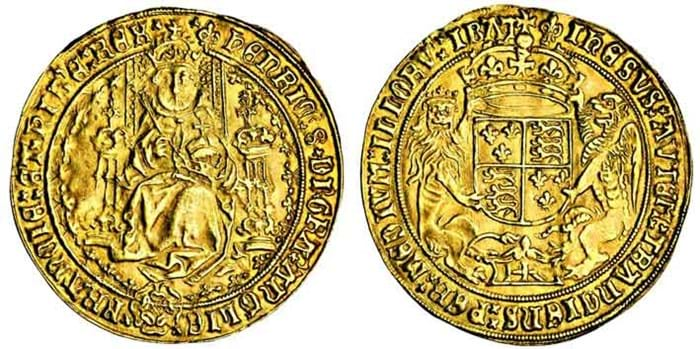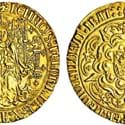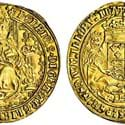The Sovereign, with a face value of one pound, was introduced by Henry VII (1485-1509) in October 1489 - the largest coin yet seen in England, both in size and value.
The coin was so-called as the design, a masterpiece of Renaissance art and rich in symbolism, showed the King in all his majesty seated on a high-backed throne flanked by greyhound and dragon on side pillars. To the reverse is the royal arms superimposed on a magnificent double rose to mark the union of the houses of York and Lancaster after the long-drawn-out War of the Roses.
There are three subtly different types (all very rare) but the type II example offered by Spink on December 18 was vaunted as one of the finest of the issue, retaining much of the fine detailing to the King's face and throne. On the market for the first time in half a century (ex the E.C. Carter collection, it was purchased by Baldwin's in the 1950s), it was estimated at what was considered a conservative £120,000-160,000.
Bidding reached £310,000 - many times what a vendor of an inferior specimen could reasonably expect.
'Fat Face'
The following lot was an equally fine example of the 'fat face' sovereign that formed part of Henry VIII's third coinage issued from 1544-47. Here the Tudor rose appears in miniature to the obverse below a portrait of the King with the reverse struck with the royal arms and the HR monogram in a cartouche.
This particular coin boasts a famed pedigree. First recorded in the 1854 J.D. Cuff sale at Sotheby's when it sold at £16 10s, it has since featured in a clutch of eminent sales including those of Lord Hastings (£34 in 1880), Bernard Roth (£80 in 1917) and finally the V.J.E. Ryan collection dispersed by Glendinings in June 1950 where the coin took £385 - considerably more than the combined hammer price of the three other Henry VIII 'third coinage' Sovereigns in that sale.
Sixty-four years since the Ryan sale, it appeared for sale with a £120,000-150,000 estimate but sold for £300,000.
The previous auction high for a Tudor coin was the £235,000 bid at St James's Auctions in March 2014 for another very fine example of the
1544-47 Sovereign.
Sovereigns were struck by each of the Tudor monarchs - chiefly as prestige issues rather than in response to any great commercial or domestic need - but the practice came to an end early in the reign of James I. Sovereigns were not to appear again for 200 years when, in 1817, a 20 shilling gold coin of roughly half the weight and diameter of the original, again assumed the name.
The buyer's premium at Spink was 20%.









